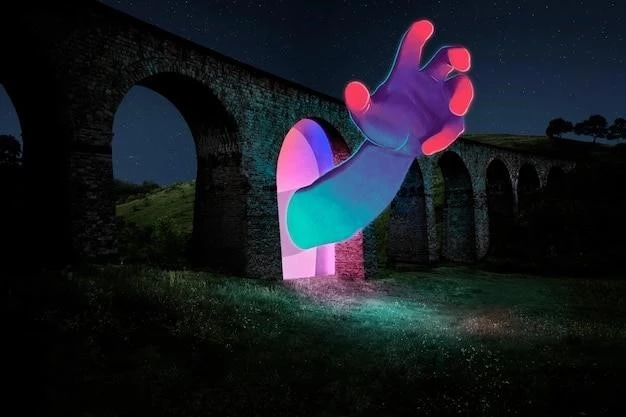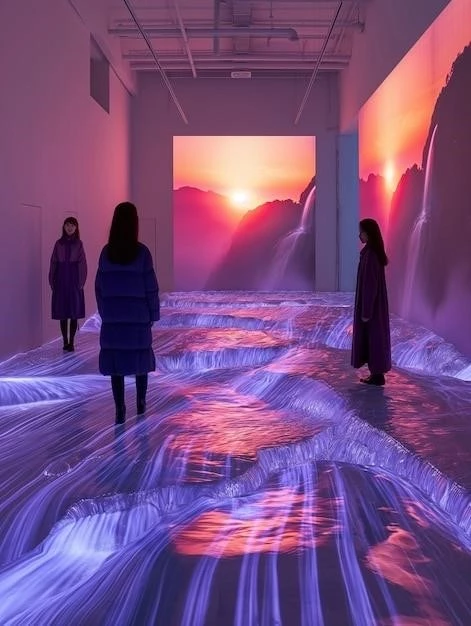Art and technology‚ seemingly disparate domains‚ have long been engaged in a captivating dance of mutual influence and innovation․ From the earliest cave paintings to the digital masterpieces of today‚ technology has provided the tools and techniques that have shaped artistic expression․ Conversely‚ art has served as a constant source of inspiration‚ pushing the boundaries of technological advancement and challenging its limitations․ This intricate relationship between art and technology continues to evolve‚ giving rise to new forms of creative expression and pushing the boundaries of human imagination․
A Historical Perspective
The intertwining of art and technology is not a recent phenomenon․ Throughout history‚ artists have embraced new technologies‚ adapting them to their creative endeavors․ In the Renaissance‚ the invention of linear perspective‚ enabled by mathematics and optics‚ revolutionized painting‚ introducing a new level of realism and depth․ Similarly‚ the development of photography in the 19th century had a profound impact on art‚ challenging traditional notions of representation and paving the way for the emergence of Impressionism and other modern art movements․
The 20th century witnessed an unprecedented acceleration in technological advancement‚ and art was quick to reflect these changes․ The advent of electricity‚ motion pictures‚ and mass production gave rise to new artistic movements like Futurism‚ Dadaism‚ and Surrealism․ These movements explored the dynamic relationship between humans and machines‚ celebrating the speed‚ energy‚ and fragmentation of modern life․

The Digital Revolution and the Rise of New Media Art
The latter half of the 20th century saw the rise of the digital revolution‚ which has fundamentally reshaped the relationship between art and technology․ The invention of the computer‚ followed by the internet‚ has ushered in an era of unprecedented possibilities for artistic creation and dissemination․ Digital art‚ in its various forms‚ has emerged as a major force in the contemporary art world‚ encompassing a wide range of practices such as:
- Digital Painting and Illustration: Artists now have access to sophisticated software and hardware that allow them to create stunning digital paintings and illustrations with unparalleled precision and control․
- Digital Photography and Video Art: Digital cameras and editing software have democratized photography and video‚ empowering artists to capture and manipulate images in ways that were previously unimaginable․
- Net Art and Digital Installations: The internet has become a canvas for artists‚ who are creating interactive and immersive experiences that blur the lines between the virtual and real worlds․
- Virtual Reality (VR) and Augmented Reality (AR) Art: VR and AR technologies are transforming the way we experience art‚ creating immersive and interactive environments that challenge our perceptions of space‚ time‚ and reality․
Artificial Intelligence: The New Frontier in Art and Technology
The rapid development of artificial intelligence (AI) is poised to further revolutionize the intersection of art and technology; AI algorithms can now generate original artworks‚ compose music‚ and even write poetry‚ raising profound questions about the nature of creativity and the role of the artist in the creative process․ While some view AI as a threat to human creativity‚ others embrace it as a powerful new tool for artistic exploration and expression․

The Impact of Technology on Art Education and Accessibility
Technology has also had a profound impact on art education and accessibility․ Digital tools and online platforms have made it easier than ever for aspiring artists to learn new skills‚ access educational resources‚ and share their work with a global audience․ Museums and galleries are increasingly incorporating technology into their exhibitions‚ creating interactive and engaging experiences that enhance visitor understanding and appreciation of art․
Ethical Considerations and the Future of Art and Technology
As technology continues to advance at an unprecedented pace‚ it is crucial to consider the ethical implications of its intersection with art․ Issues such as data privacy‚ algorithmic bias‚ and the ownership of AI-generated art are just some of the challenges that artists‚ technologists‚ and society as a whole will need to address․ The future of art and technology is full of both exciting possibilities and complex ethical considerations․ As these two domains continue to evolve and intersect‚ it is essential to engage in thoughtful dialogue and responsible innovation to ensure that technology empowers and enhances human creativity‚ rather than diminishing or replacing it․
Conclusion
The intersection of art and technology is a dynamic and constantly evolving landscape․ From the earliest cave paintings to the digital masterpieces of today‚ technology has provided the tools and techniques that have shaped artistic expression․ In turn‚ art has served as a constant source of inspiration‚ pushing the boundaries of technological advancement; As technology continues to evolve at an unprecedented pace‚ we can expect to see even more innovative and thought-provoking collaborations between artists and technologists‚ blurring the lines between the physical and digital worlds and expanding the possibilities of human creativity․










